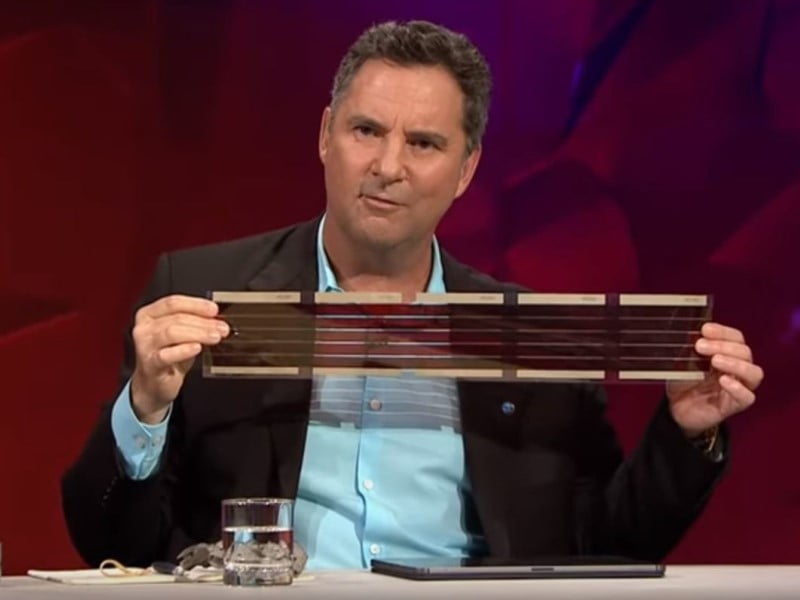Larry Marshall has just a few short weeks left at Australia’s national science agency the CSIRO, where he has been chief executive officer since 2015, with his latest contract due to finish at the end of the month.
As he heads towards the exit, Dr Marshall has left a book behind, publishing ‘Invention to Innovation: How scientists can drive our economy’ written with Jenna Daroczy, a senior communications staffer inside CSIRO.
The book, available though CSIRO Publishing, is a surprisingly fast paced romp through the Australian scientific and business innovation ecosystems, with detours into finance, academia, Silicon Valley, venture capital and entrepreneurship – and a myriad of other pathways that Larry Marshall has either walked or helped steer.
Full disclosure: I have not read the book cover to cover. But it is beautifully indexed, making it a breeze to jump from the formation of the Main Sequence venture fund (and the background to getting HostPlus and Temasek on board, are both ripping yarns) or traversing the heroes and villains (not so many of these) of innovation, from superstar economist Mariana Mazzucato to Australian hero David Skellern to Malcolm Turnbull to VC legend Bill Ferris.
As you would expect from an author as well-connected as Dr Marshall, there is a who’s who of business and technology leaders who have lent endorsements to this book, from Forescue’s Andrew Forrest, Google’s Mel Silva, Blackbird founder Niki Scevak, Monash chancellor Simon McKeon, and business legend (and former CSIRO chair) Catherine Livingstone.

Its reflections are based on Larry’s lived experience as a scientist entrepreneur, from companies founded, to money raised, to patents filed, and to his more recent years at the CSIRO; a role that involved significant effort in building out Australia’s supporting infrastructure of deep tech ventures.
It is worth noting that the CSIRO was a very different organisation when Dr Marshall was first appointed to the role at the start of 2015. He jumped to the job from Southern Cross Venture Partners, a modest-sized VC.
At the time it was considered an out-of-the-box appointment. Some would call it a ‘crazy-brave’ decision that sent a signal of an intention to steer the organisation on to a more commercial research pathway.
And that is exactly what has happened. This does not mean that CSIRO is entirely focused on commercial research. But under Dr Marshall it has become more focused on impact, and much better at recognising commercial or social impact potential.
So yes, Dr Marshall leaves the CSIRO as a very different organisation to the one he joined. That has taken enormous energy over eight years, and a commitment to delivering the same messages over and over and over to different audiences of staff and stakeholders to achieve a level of buy-in that has enabled change.
This book is about building capability in Australia, creating jobs and creating wealth. The thinking behind it comes from an extensive range of interviews and exchanges – David Thodey, Alan Finkel, Roy Green, Robyn Denholm, Genevieve Bell, Matt Barrie, Andrew Forrest, Niki Scevak, Sam Sicilia and many more.
Dr Marshall can be relentlessly positive. And of course, while this book explores the institutional and structural challenges to solving the three Valleys of Death that face scientists and deep tech entrepreneurs, it is ultimately optimistic. That’s the nature of the author.
“Yes, we have more barriers to innovation, including social barriers like complacency from our mineral wealth, cultural cringes around careers and competition in a ‘finite pie’ mentality, as well as systemic barriers like not always measuring the right things, not backing a market vision for our science and the small size, youth and risk aversion of our investment and venture system,” Dr Marshall writes.
“But we have done amazing things with few resources, so I am excited about what’s possible as we start to see more VC flowing and more deep tech founders and CEOs finding their feet,” he said.
Dr Marshall says it does “a disservice to our great Australian culture” to suggest we should copy Silicon Valley or any other innovation system from around the world. Australia has its own strengths. “We just need to make it a little easier to leap across the Valley of Death.”
Invention to Innovation: How scientists can drive our economy by Larry Marshall with Jenna Daroczy is published by CSIRO Publishing.
Do you know more? Contact James Riley via Email.

